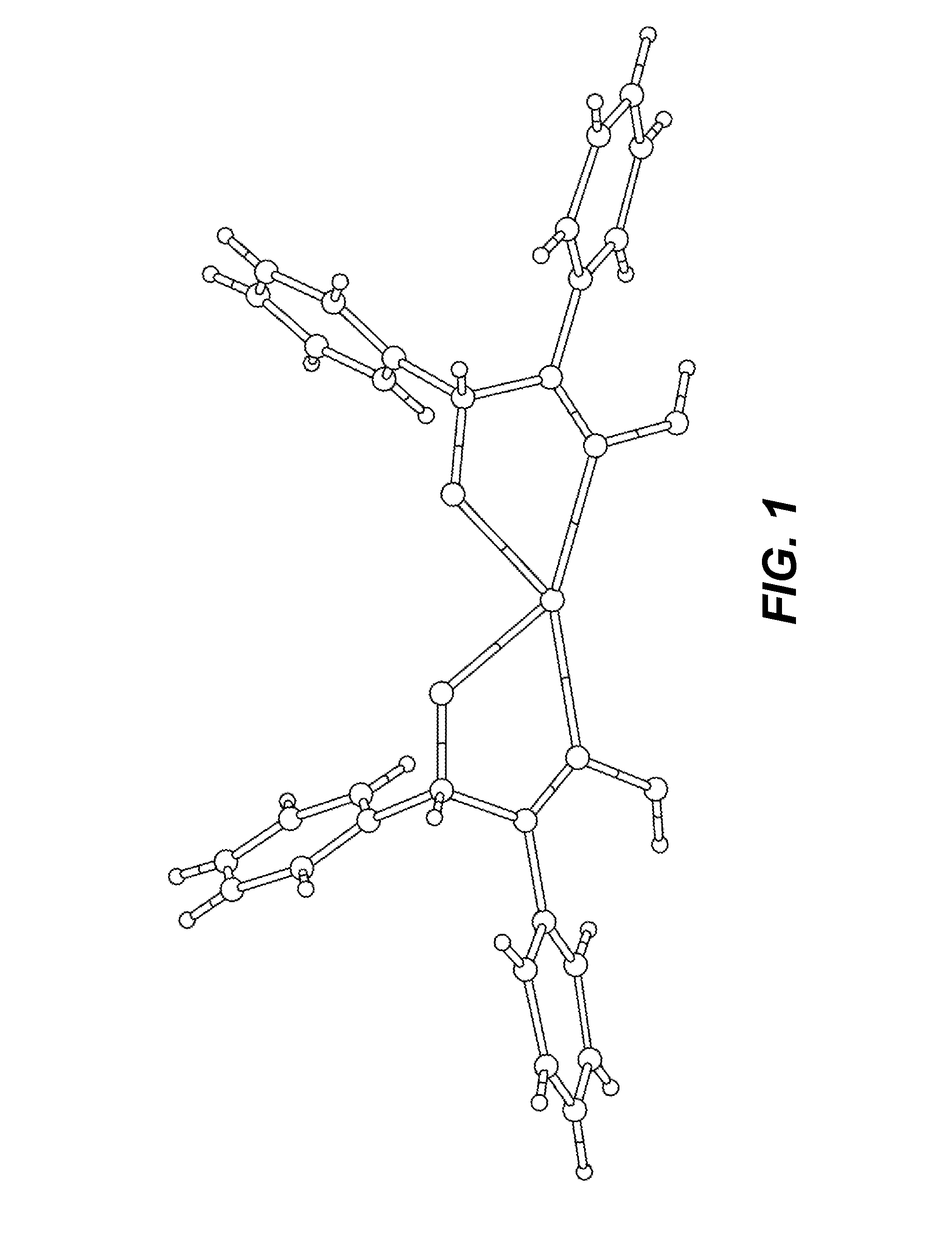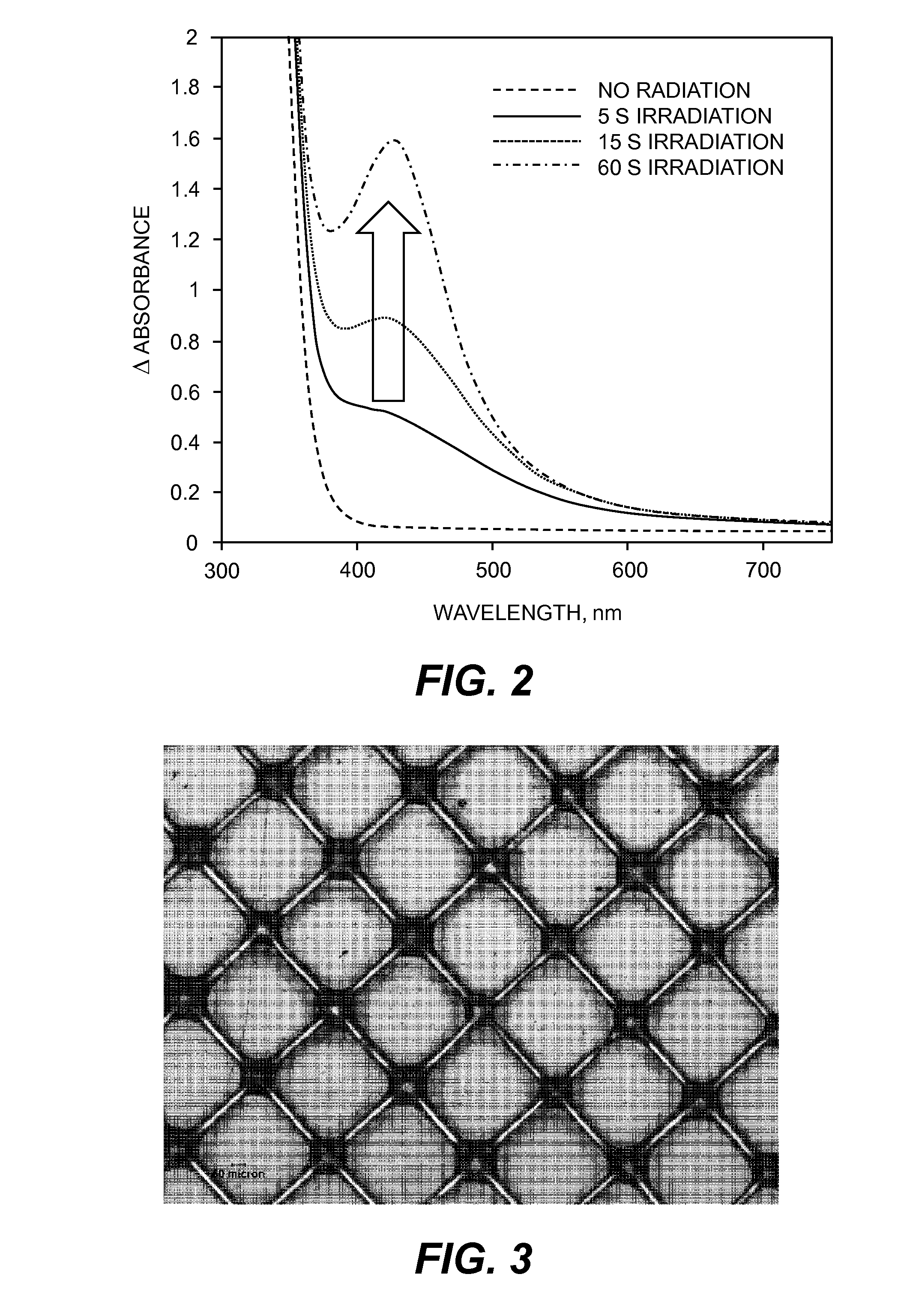Forming silver catalytic sites from reducible silver-oximes
a catalytic site and reducible silver technology, applied in the field of forming silver catalytic sites from reducible silveroximes, can solve the problems of inability to bend or bend, inability to easily bend or bend, and difficulty in optimizing the design of both precursors and processing procedures, so as to reduce the defect of electrically-conductive patterns, reduce operator errors, and improve the effect of stability
- Summary
- Abstract
- Description
- Claims
- Application Information
AI Technical Summary
Benefits of technology
Problems solved by technology
Method used
Image
Examples
##ventive example 1
Inventive Example 1
[0282]This example demonstrates use of a silver-oxime complex for photogeneration of silver particles in a non-aqueous metal catalytic composition according to the present invention.
[0283]Preparation of Non-aqueous Metal Catalytic Composition Containing Ag(α-benzoinoxime)2+NO3− Complex:
[0284]To a mixture of 1,1,1-trimethylolpropane triacrylate (1.66 g, SR351, Sartomer) and ethoxylated (30) bisphenol A dimethacrylate (3.33 g, SR 9036A, Sartomer), photoinitiator and silver ion photoreducing agent 2-benzyl-2-dimethylamino-1-(4-morpholinophenyl)-butanone-1 (0.4 g,˜6 weight %) was added and dissolved at room temperature in an ultrasound bath. To this mixture, the Ag(α-benzoinozime)2+.NO3− complex (1 g, ˜15 wt %) dissolved in acetonitrile (0.7 ml) was added and dissolved by stirring in the dark to provide a non-aqueous metal catalytic composition.
[0285]Photogeneration of Silver Nanoparticles in Thin Film:
[0286]The non-aqueous metal catalytic composition described above ...
##ventive example 2
Inventive Example 2
[0289]Fine lines of nominal width 7-10 μm were printed on a poly(ethylene terephthalate) film substrate using the metal catalytic composition of Inventive Example 1 and a flexographic test printer IGT F1 and flexographic printing members obtained from commercially available Kodak Flexcel NX photopolymer plates, and imaged using a mask that was written using the Kodak Square Spot laser technology at a resolution of 12,800 dpi.
[0290]The printed precursor article was exposed to UV light using Fusion benchtop conveyor unit equipped with H-bulb as a nominal UV dose of between 50-100 mJ / cm2 to provide an intermediate article.
[0291]This intermediate article was immersed in an electroless copper plating bath, ENTHOSE® (Enplate LDS CU-406 SC) at 45° C. and 5 minutes using conditions by the commercial supplier. The resulting product article was taken out of the bath, rinsed with water, and dried. A micrograph of the printed and electrolessly plated product article showed cl...
PUM
| Property | Measurement | Unit |
|---|---|---|
| wavelength | aaaaa | aaaaa |
| wavelength | aaaaa | aaaaa |
| particle size | aaaaa | aaaaa |
Abstract
Description
Claims
Application Information
 Login to View More
Login to View More - R&D
- Intellectual Property
- Life Sciences
- Materials
- Tech Scout
- Unparalleled Data Quality
- Higher Quality Content
- 60% Fewer Hallucinations
Browse by: Latest US Patents, China's latest patents, Technical Efficacy Thesaurus, Application Domain, Technology Topic, Popular Technical Reports.
© 2025 PatSnap. All rights reserved.Legal|Privacy policy|Modern Slavery Act Transparency Statement|Sitemap|About US| Contact US: help@patsnap.com



